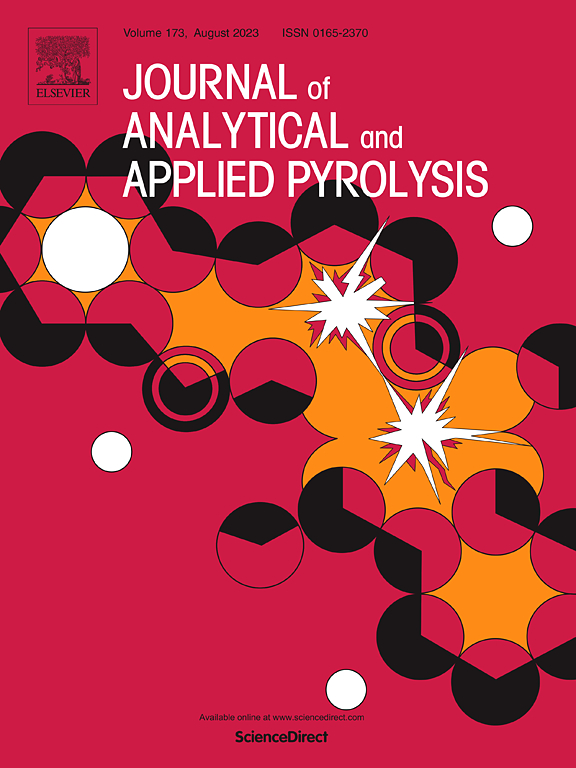铜渣- al2o3复合材料催化杨木高压高温热解:通过热化学活化提高合成气成分
IF 6.2
2区 化学
Q1 CHEMISTRY, ANALYTICAL
引用次数: 0
摘要
杨木木屑是木材加工业的副产品,可磨成杨木粉(WP)。铜渣是铜冶炼工业产生的低价值废物,经高温煅烧后,其铁含量丰富,铜和镁含量也较低。这种组成使得CS适合与Al2O3 (CSA)混合作为生物质热解催化剂。本研究旨在研究高温高压条件下CSA对WP热解/气化机理的影响,重点关注热解动力学、热力学和气体产物的变化。根据CSA与WP的比例,将混合物分为WP/CSA10和WP/CSA5。结果表明,CSA的加入使反应所需活化能降低了17 %,热分解率提高了18 %。热解产物分析表明,CSA有利于H2和CO的生成,在950℃高温高压热解下,H2产量提高了14 %,CO产量提高了12 %。这些结果表明CSA具有显著的催化作用。该方法不仅解决了废铜渣的环境负担,而且为优化催化热解工艺,促进WP的高价值利用提供了理论基础。本文章由计算机程序翻译,如有差异,请以英文原文为准。
High-pressure and high-temperature pyrolysis of poplar wood catalyzed by copper slag-Al2O3 composites: Enhancing syngas composition via thermal-chemical activation
Poplar wood chips, a by-product of the wood processing industry, can be ground into poplar wood powder (WP). Copper slag (CS), a low-value waste product generated from the copper smelting industry, becomes rich in Fe and contains small amounts of Cu and Mg after high-temperature calcination. This composition makes CS suitable for mixing with Al2O3 (CSA) as a biomass pyrolysis catalyst. This study aims at investigating the effect of CSA on the pyrolysis/gasification mechanism of WP under high-temperature and high-pressure conditions, focusing on changes in pyrolysis kinetics, thermodynamics, and gas products. Based on the ratio of CSA to WP, the mixtures are categorized as WP/CSA10 and WP/CSA5. The results revealed that the addition of CSA reduced the activation energy required for the reaction by 17 % and increased the thermal decomposition rate by 18 %. The analysis of pyrolysis products indicated that CSA facilitated the generation of H2 and CO. In the high-temperature and high-pressure pyrolysis at 950 °C, the H2 production increased by 14 % and the CO production increased by 12 %. These results demonstrate the significant catalytic effect of CSA. This approach not only addresses the environmental burden of waste copper slag but also provides a theoretical foundation for optimizing the catalytic pyrolysis process and promoting the high-value utilization of WP.
求助全文
通过发布文献求助,成功后即可免费获取论文全文。
去求助
来源期刊
CiteScore
9.10
自引率
11.70%
发文量
340
审稿时长
44 days
期刊介绍:
The Journal of Analytical and Applied Pyrolysis (JAAP) is devoted to the publication of papers dealing with innovative applications of pyrolysis processes, the characterization of products related to pyrolysis reactions, and investigations of reaction mechanism. To be considered by JAAP, a manuscript should present significant progress in these topics. The novelty must be satisfactorily argued in the cover letter. A manuscript with a cover letter to the editor not addressing the novelty is likely to be rejected without review.

 求助内容:
求助内容: 应助结果提醒方式:
应助结果提醒方式:


